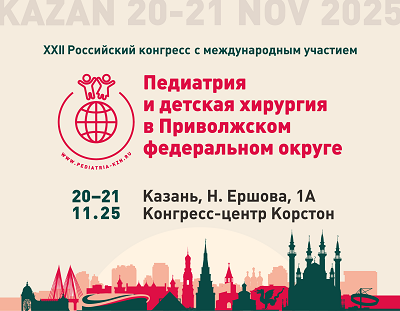Clinical diagnostics of pneumonia caused by atypical microorganisms
https://doi.org/10.21508/1027-4065-2025-70-5-42-49
Abstract
Since 2023, there has been an increase in the incidence of pneumonia caused by atypical bacteria, primarily Mycoplasma pneumoniae. Atypical pathogens have several common features: they are not cultured by conventional microbiological methods, are obligate or facultative intracellular parasites, often cause extrapulmonary symptoms and, importantly for clinicians, due to the absence of a peptide cell wall, they do not respond to β-lactam antibiotics.
The aim of the study was to identify clinical and laboratory features of pneumonia associated with M. pneumoniae and C. pneumoniae in children hospitalized in an infectious diseases hospital.
Materials and methods. A retrospective analysis of 355 medical records of children hospitalized in an infectious diseases hospital with a diagnosis of atypical pneumonia was conducted. The patients were divided into groups: 298 patients with mycoplasma pneumonia, 22 children with chlamydial pneumonia and 35 children with a combination of M.pneumoniae and C.pneumoniae.
Results and conclusions. Modern atypical pneumonia in hospitalized children is characterized by an acute onset with the development of fever (79%, 280/355), asthenia (90%, 319/355) and cough (94.5%, 336/355). Dyspnea develops in 30%, 105/355, respiratory failure in most cases is moderate, only 13%, 48/355 of hospitalized patients need respiratory support. More often, the process is right-sided (46.8%, 166/355), auscultatory signs are present in 82%, 293/355 children. Extrapulmonary manifestations in the form of damage to the gastrointestinal tract and skin are recorded in an average of 7–15%.
About the Authors
S. V. KhaliullinaRussian Federation
420012, Kazan
V. A. Anokhin
Russian Federation
420012, Kazan
V. A. Pozdnyak
Russian Federation
420012, Kazan
M. R. Gataullin
Russian Federation
420110, Kazan
A. R. Gilmutdinova
Russian Federation
420012, Kazan
G. I. Aibatova
Russian Federation
420110, Kazan
References
1. Khaliullina S.V., Anokhin V.A., Gataullin M.R., Pavlova T.Yu., Valiev R.I. On the etiology of community-acquired pneumonia in children. Rossiyskiy vestnik perinatology i ipediatrii. (Russian Bulletin of Perinatology and Pediatrics). 2024; 69(5): 13–21. (in Russ) DOI 10.21508/1027–4065–2024–69–5–13–21
2. Chen Q., Xu R., Gu Y., Peng J., Ma C., Su D., et al. Respiratory pathogen analysis in pediatric inpatients unraveled the infection pattern of Mycoplasma pneumoniae post the COVID-19 pandemic. Front Public Health. 2024; 12: 1437508. DOI: 10.3389/fpubh.2024.1437508
3. Yang Z., Li S., Li X., Shen P., Sun Y., Lin H., et al. Distribution of respiratory pathogens in patients with pneumonia in Yinzhou, Ningbo, 2015–2024. Journal of Peking University (Health Sciences). 2025; 57(3): 496–506. DOI: 10.19723/j.issn.1671-167X.2025.03.013
4. Shim J.Y. Current perspectives on atypical pneumonia in children. ClinExpPediatr. 2020; 63(12): 469–476. DOI: 10.3345/cep.2019.00360
5. Nguyen A.D., Stamm D.R., Stankewicz H.A. Atypical Bacterial Pneumonia. [Updated 2025 Apr 6]. In: StatPearls [Internet]. Treasure Island (FL): StatPearlsPublishing; 2025 Jan-. Available from: https://www.ncbi.nlm.nih.gov/books/NBK532239/ Ссылка активна на 23.07.2025
6. Basarab M., Macrae M.B., Curtis C.M. Atypical pneumonia. CurrOpinPulm Med. 2014; 20(3): 247–251. DOI: 10.1097/MCP.0000000000000048
7. Ministry of Health of the Russian Federation. Clinical guidelines. Pneumonia (community-acquired). Children. 2022. Ministry of Health of the Russian Federation. (in Russ)
8. https://cr.minzdrav.gov.ru/view-cr/714_1 Ссылка активна на 23.07.2025
9. Abdulhadi B., Kiel J. Mycoplasma Pneumonia. [Updated 2023 Jan 16]. In: StatPearls [Internet]. Treasure Island (FL): StatPearls Publishing; 2025 Jan-. Available from: https://www.ncbi.nlm.nih.gov/books/NBK430780/ Ссылка активна на 23.07.2025
10. Poddighe D. Mycoplasma pneumoniae-related hepatitis in children. MicrobPathog. 2020; 139: 103863. DOI: 10.1016/j.micpath.2019.103863
11. Kutty P.K., Jain S., Taylor T.H., Bramley A.M., Diaz M.H., Ampofo K., et al. Mycoplasma pneumoniae Among Children Hospitalized With Community-acquired Pneumonia. Clin Infect Dis. 2019; 68(1): 5–12. DOI: 10.1093/cid/ciy419
12. Chen B., Pan J., Peng Y., Zhang Y., Wan Y., Wei H., et al. Characteristics and risk factors for outcomes in patients with Mycoplasma pneumoniae mono- and coinfections: A multicenter surveillance study in Wuhan, China, 2023. Infect Dis Model. 2025; 10(3): 989–1001. DOI: 10.1016/j.idm.2025.04.006
13. Gordon O., Oster Y., Michael-Gayego A., Marans R.S., Averbuch D., Engelhard D., et al. The Clinical Presentation of Pediatric Mycoplasma pneumoniae Infections-A Single Center Cohort. Pediatr Infect Dis J. 2019; 38(7): 698–705. DOI: 10.1097/INF.0000000000002291
14. Li M., Gao J. Correlation and Clinical Significance of Changes in Serum Soluble P-selectin, D-dimer and Platelet Levels with the Severity of Mycoplasma Pneumoniae Infection in Children. AlternTher Health Med. 2025; 31(4): 244–249
15. He B., Li X., Dong R., Yao H., Zhou Q., Xu C., et al. Development of machine learning-based differential diagnosis model and risk prediction model of organ damage for severe Mycoplasma pneumoniae pneumonia in children. SciRep. 2025; 15(1): 9431. DOI: 10.1038/s41598-025-92089-3
Review
For citations:
Khaliullina S.V., Anokhin V.A., Pozdnyak V.A., Gataullin M.R., Gilmutdinova A.R., Aibatova G.I. Clinical diagnostics of pneumonia caused by atypical microorganisms. Rossiyskiy Vestnik Perinatologii i Pediatrii (Russian Bulletin of Perinatology and Pediatrics). 2025;70(5):42-49. (In Russ.) https://doi.org/10.21508/1027-4065-2025-70-5-42-49










































